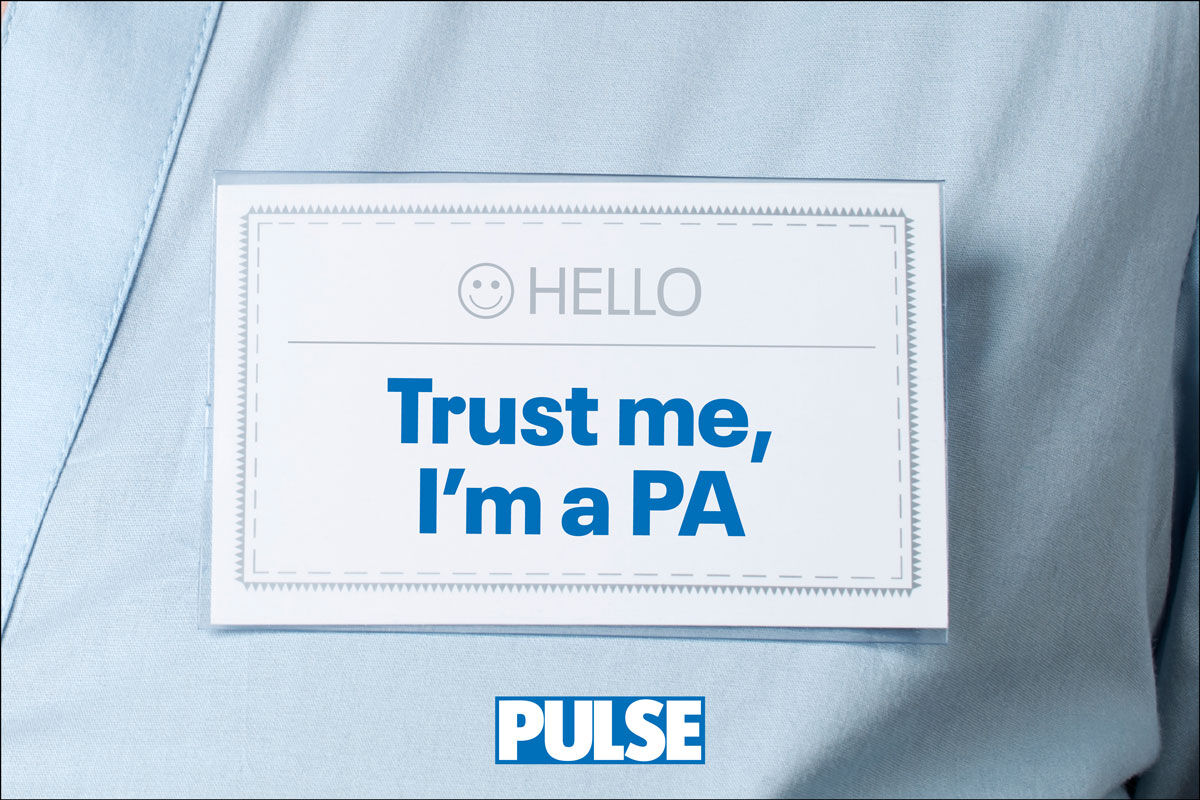Long-awaited new draft UK joint guidelines on asthma care overhauls recommended diagnostics and treatment, but the review committee warned they will require ‘significant investment’.
Draft NICE/BTS/SIGN guidelines on diagnosis, monitoring and management of asthma recommends significant changes to current treatment approaches, including replacing the use of short-acting beta agonist (SABA) alone with combined inhaled corticosteroid (ICS)/formoterol inhalers.
Now out for consultation, the guidelines also recommend a stepwise series of tests to accurately identify asthma, including eosinophil count, FeNO, spirometry and bronchial challenge in patients where the condition is suspected on clinical grounds.
Yet the committee noted there is wide variability on access to testing with many of those now recommended for both adults and children not available or routinely used. This includes FeNO equipment which is not available in some areas and no access to bronchial challenge testing for primary care.
‘The recommendations will increase the demand for challenge tests and initially there will be a capacity problem’, the committee said. ‘Incorporating the recommended diagnostic sequences into clinical practice would therefore require significant investment’.
FeNO testing has also been recommended as part of routine testing during annual asthma reviews which would also be a ‘significant change in practice’, the committee added with only a minority of GP practices having access to onsite testing.
The use of short-acting beta agonists (SABA) alone is also being phased out after being highlighted in several national reviews of asthma deaths. This would bring the UK guidance in line with the international GINA recommendations on asthma management.
For those aged 12 and over with newly diagnosed asthma, GPs should now prescribe a low-dose combined ICS/formoterol combination inhaler to be taken as needed for symptom relief – another ‘significant change in practice’, the committee said.
NICE/BTS/SIGN also recommended a new treatment strategy of maintenance therapy (MART) for those over 12 years depending on asthma control (see box) with increasing use of regular ICS/formoterol depending on response.
People with an existing diagnosis who are stable on current therapy do not have to switch to the new recommendations. But where asthma is not controlled, the guidelines provide detail on how clinicians should approach updating their care.
The recommendations update previous NICE guidelines published in 2017 and those issued by the British Thoracic Society in 2019. Experts had warned GPs had been left in limbo due to ambiguity around asthma treatment.
A BTS spokesperson said: ‘BTS encourages a wide range of stakeholders and experts to submit their feedback as part of the consultation process. This will help to ensure that the new guidance is both straightforward to implement and ultimately, will improve outcomes for people living with chronic asthma.’
Dr Katherine Hickman, a GP in Bradford and chair of the Primary Care Respiratory Society said: ‘I am very pleased that we will soon have a single national guideline for managing asthma that integrates the NICE and BTS/SIGN guidelines.
‘This development represents a significant advancement, promising to streamline primary care practices and ensure uniformity in asthma management nationwide.’
Dr Hickman said she would be looking through the document in more detail in order to provide feedback.
‘A word of caution, though, that once the guidance is published, we must ensure that any diagnostic tests recommended for primary care are funded appropriately.
‘This includes the equipment and the time taken to carry out the tests. Without adequate funding primary care is under no obligation to carry out these tests if they are not part of their contract regardless of whether they are included in QOF.’
Henry Gregg, director of external affairs at Asthma and Lung UK, said for too long there had been widespread complacency around asthma. ‘The new national asthma guidelines will need to set out what is necessary to make sure every person with asthma is supported to take their preventer inhaler as prescribed, has an annual review, and receives a written asthma action plan.
‘For the guidelines to be effective, the next government must ensure they are backed by sufficient funding to ensure services work for people with asthma, and to make sure the NHS workforce is upskilled in asthma care. We are looking forward to responding to the consultation, for what is a long overdue update of these guidelines.’
The draft guidelines are out for consultation until the 30 July 2024
Draft new joint asthma guidance in full
Asthma: diagnosis, monitoring and chronic asthma management
Objective tests
Adults
1.2.1 Measure the blood eosinophil count or FeNO level in adults with a history suggestive of asthma. Diagnose asthma if the eosinophil count is above the laboratory reference range or the FeNO level is 50 ppb or more. [2024]
1.2.2 If asthma is not confirmed by eosinophil count or FeNO level, measure bronchodilator reversibility (BDR) with spirometry. Diagnose asthma if reversibility is greater than 12% from baseline and greater than 200 ml (or greater than 10% of predicted normal). [2024]
1.2.3 If asthma is not confirmed by eosinophil count, FeNO or BDR but still suspected on clinical grounds, measure bronchial responsiveness. Diagnose asthma if bronchial hyper-responsiveness is present. [2024]
Children aged 5-16 years
1.2.4 Measure the FeNO level in children with a history suggestive of asthma. Diagnose asthma if the FeNO level is more than 35 ppb. [2024]
1.2.5 If the FeNO level is not raised, or if FeNO is not available, measure BDR. Diagnose asthma if BDR is greater than 12% from baseline (or greater than 10% of predicted normal). [2024]
1.2.6 If asthma is not confirmed by FeNO or BDR but still suspected on clinical grounds, either perform skin prick testing to house dust mite or measure IgE level and eosinophil count.
- Exclude asthma if there is no evidence of sensitisation to house dust mite on skin prick testing or if the total serum IgE is not raised.
- Diagnose asthma if there is evidence of sensitisation or a raised IgE level and the eosinophil count is more than 0.5 x 109 per litre. [2024]
1.2.7 If there is still doubt about the diagnosis, refer to a paediatric respiratory specialist for a second opinion, including consideration of a bronchial challenge test. [2024]
Monitoring
1.5.1 Monitor asthma control at every review. In addition to asking about symptoms, check:
- time off work or school due to asthma
- amount of reliever inhaler used
- number of courses of oral corticosteroids
- active or passive exposure to smoking. [2024]
1.5.2 Consider using a validated symptom questionnaire (for example, the Asthma Control Questionnaire or the Asthma Control Test) to assess asthma control in adults at annual review. [2024]
1.5.3 Do not use regular peak expiratory flow (PEF) monitoring to assess asthma control unless there are person-specific reasons for doing so. [2024]
1.5.4 Consider FeNO monitoring for people with asthma:
- at their regular review, and
- before and after changing their asthma therapy. [2024]
Pharmacological treatment
1.6.2 Do not prescribe short-acting beta2 agonists to people of any age with asthma without a concomitant prescription of an inhaled corticosteroid (ICS). [2024]
1.7.1 Offer a low-dose ICS/formoterol combination inhaler to be taken as needed for symptom relief to people aged 12 and over with newly diagnosed asthma. [2024]
1.7.2 If the person needing asthma treatment presents highly symptomatic (for example, regular nocturnal waking) or with a severe exacerbation, start treatment with low-dose MART (maintenance and reliever therapy). Consider stepping down to a low-dose ICS/formoterol combination inhaler used only as needed for symptom relief at a later date if their asthma is controlled. [2024]
1.7.3 Offer low-dose MART to people aged 12 and over with asthma that is not controlled on a low-dose ICS/formoterol combination inhaler used only as needed. [2024]
1.7.4 Offer moderate-dose MART to people aged 12 and over with asthma that is not controlled on low-dose MART. [2024]
1.7.5 Consider adding a leukotriene receptor antagonist (LTRA) to moderate-dose MART for people aged 12 and over with asthma that is not controlled on moderate-dose MART alone. Give the LTRA for a minimum trial period of 3 months (unless there are side-effects) and then stop it if it is ineffective. [2024]
1.7.6 Consider adding a long-acting muscarinic receptor antagonist (LAMA) to moderate-dose MART plus an LTRA, or to moderate-dose MART alone if an LTRA has proved ineffective, for adults with asthma that is not controlled on current treatment. Give the LAMA for a minimum trial period of 3 months (unless there are side-effects) and then stop it if it is ineffective. [2024]
1.7.7 Refer people to a specialist in asthma care when asthma is not controlled despite treating with moderate dose ICS, LABA (long-acting beta2 agonist), LTRA and a LAMA. [2024].
Transferring from other treatment pathways
1.7.8 Consider changing treatment for people with confirmed asthma who are currently using a short-acting beta2 agonist (SABA) only to a low-dose ICS/formoterol combination inhaler used as needed. [2024]
1.7.9 Consider changing treatment to low-dose MART for people with asthma that is not controlled on:
- regular low-dose ICS plus SABA as needed
- regular low-dose ICS/LABA combination inhaler plus SABA as needed
- regular low-dose ICS and supplementary therapy (LTRA and/or LAMA) plus SABA as needed.
- regular low-dose ICS/LABA combination inhaler and supplementary therapy (LTRA and/or LAMA) plus SABA as needed. [2024]
- Consider changing treatment to moderate-dose MART for people with
asthma that is not controlled on:
- regular moderate dose ICS plus SABA as needed
- regular moderate dose ICS/LABA combination inhaler plus SABA as needed
- regular moderate dose ICS and supplementary therapy (LTRA and/or LAMA) plus SABA as needed
- regular moderate dose ICS/LABA combination inhaler and supplementary therapy (LTRA and/or LAMA) plus SABA as needed. [2024]
1.7.11 When changing from low- or moderate-dose ICS (or ICS/LABA combination inhaler) plus supplementary therapy to MART, consider whether to stop or continue the supplementary therapy based on the degree of benefit achieved when first introduced. [2024]
1.7.12 Refer people with asthma that is not controlled on high dose ICS to a specialist in asthma care. [2024]
Source: NICE/British Thoracic Society/Healthcare Improvement Scotland/SIGN

















In 2019 I went to a study day at our local hospital where we were told all paediatric ?asthma needed referral for
formal testing and diagnoses.
Now if we refer we are told ‘not commissioned to diagnose asthma’ and to have a crack with pefr monitoring and test if treatment.
All pie in the sky yet again , written by people with no idea what is available in GP land. Waste of time if not funded. I am not aware of any GP surgery that has FENO testing or anyone trained to do or interpret the result.